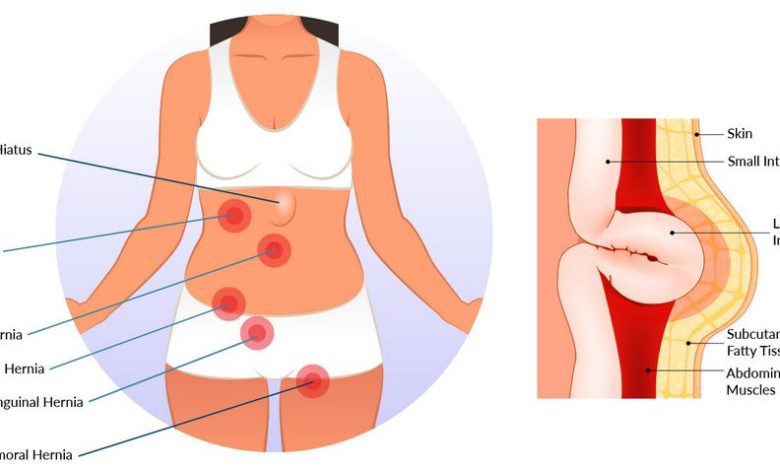Lump on belly, abdominal hernia: What's it, symptoms, diagnostics, treatment, prevention

Synonyms: abdominal hernia; Abdominal wall defects; Thickening in the abdominal wall; Lump on belly
Lump in the abdomen; Abdominal hernia; Hernia – abdominal; Abdominal wall defects; Lump in the abdominal wall; Abdominal wall mass
One hundred such bump on the stomach
Lump on belly (most often it is a hernia) is a small area of swelling or bulge of tissue in the abdomen.
Causes of bumps on the stomach
Most often, a tumor in the abdomen occurs due to a hernia.. Abdominal hernia occurs, when there is a weak spot in the abdominal wall. This allows the internal organs to protrude through the abdominal muscles.. A hernia may appear after, how tight are you, lifted something heavy, or after a prolonged cough.
There are several types of hernias, depending on location, where they occur:
- Inguinal hernia looks like a bulge in the groin or scrotum. This type is more common in men, than in women.
- Postoperative hernia can form through the scar, if you have had abdominal surgery.
- Umbilical hernia looks like a bulge around the navel. It happens, when the muscle around the navel does not close completely.
Other causes of lumps in the abdominal wall include:
- Hematoma (accumulation of blood under the skin after an injury)
- Lipoma (accumulation of fatty tissue under the skin)
- swollen lymph node
- Tumor of the skin or muscles
When to See a Healthcare Professional for a Bump on Your Stomach
Contact your doctor, if you have a lump in your stomach, especially if it increases, changes color or causes pain.
If you have a hernia, consult a doctor, if:
- The appearance of your hernia is changing.
- Your hernia is causing a lot of pain.
- You have symptoms of flatulence or you feel bloated.
- Fever appeared.
- There is pain or tenderness around the hernia.
- You are vomiting or nauseous.
Blood supply to organs, protruding from a hernia, may be terminated. It's called a strangulated hernia. This condition is very rare, but if it occurs, urgent medical attention is required.
What will the doctor do when examining a lump on the abdomen
A healthcare professional will examine you and ask questions about your medical history and symptoms, such as:
- Where is the lump?
- When did you first notice the protrusion of tissue on your abdomen??
- The bump is always there or does it appear from time to time?
- What causes the tumor to grow or shrink?
- What other symptoms do you have?
During the physical examination, you may be asked to cough or strain.
It may be necessary hernia repair surgery, that don't disappear on their own. The operation can be performed through a large surgical incision or through a small incision. (laparoscopic surgery), into which the surgeon inserts the camera and other instruments.
Sources
- Ball JW, Dains JE, Flynn JA, Solomon BS, Stewart RW. Abdomen. In: Ball JW, Dains JE, Flynn JA, Solomon BS, Stewart RW, eds. Seidel’s Guide to Physical Examination. 9th ed. St Louis, MO: Elsevier; 2019:chap 18.
- Privratsky AM, Barreto JC, Turnage RH. Abdominal wall, umbilicus, peritoneum, mesenteries, omentum, and retroperitoneum. In: Townsend CM Jr, Beauchamp RD, Evers BM, Mattox KL, eds. Sabiston Textbook of Surgery. 21st ed. St Louis, MO: Elsevier; 2021:chap 44.
